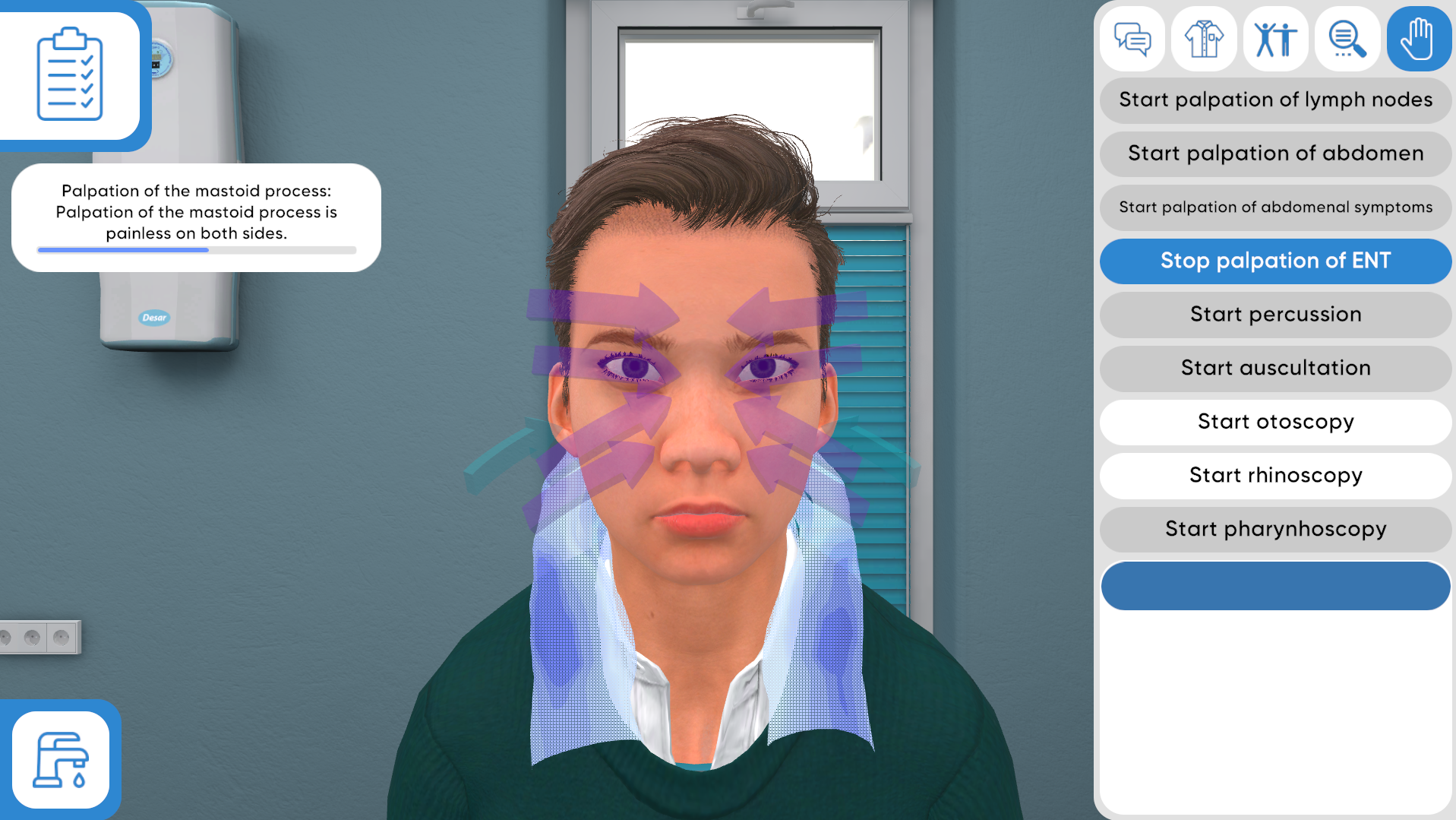XR-Clinic, developed by MVR Technologies and distributed by Nasco Healthcare, is one of the most innovative solutions in the world of VR simulation. In this review, part of the SIM Review column, we look in detail at the features of this powerful tool, which allows healthcare professionals to experience realistic clinical scenarios in a safe and immersive virtual environment. Discover the strengths and limitations of XR-Clinic, along with the final verdict: is it really the ideal solution for advanced clinical training?
Introduction
Serious games represent an innovative and engaging tool for learning and training, combining playful dynamics with educational objectives. In health care, the use of games based on clinical cases is increasingly popular, targeting both medical and health profession students and already working professionals. These tools are based on realistic and interactive scenarios, enabling participants to make diagnostic and therapeutic decisions in a safe and controlled environment.
The main objective is to simulate clinical situations, both simple and complex , to facilitate the consolidation of theoretical and practical skills. Users can explore different intervention possibilities without the risk of compromising the health of real patients. This approach allows training in clinical reasoning, stress management skills and teamwork, skills that are essential both for those in the learning phase and for those who need to maintain high professional standards.
XR-Clinic
At startup, XR-Clinic presents itself with a huge amount of categories and scenarios covering a fair amount of topics. Once we enter inside a scenario, unlike most clinical serious games, we do not find the patient directly but have to let him or her in.
This waiting time allows for important reflection by the learner, or group of learners, before letting the patient in and thus start the scenario.
Once inside, we can interview the patients as well as position them in the most comfortable way for our examination, since, depending on the position we choose, we can perform the different examinations (e.g., have them open their mouth or sit up).
The peculiarity of this scenario is that it encompasses the entire outpatient clinic, with both a chair and an examination couch present.
Excellent fidelity
In general, XR-Clinic, both the VR and Desktop versions, comes with very simple but well-detailed graphics, and above all, very light: it was deliberately tested on an older notebook, and there were no signs of lag.
Immersiveness and variety
XR-Clinic aims to be a superior immersive experience, putting users and caregivers directly at the center of the clinical scenarios. This is evident as the scenario is very free-form in that you can use your clinic entirely, including washing and disinfecting hands before the visit.
Another strong point is the integration with VR headsets, which add an extra layer of realism to the experience. Most interestingly, however, is the scalability: XR-Clinic is designed to work well in both universities and hospitals, thanks to scenarios with progressive difficulty, making it accessible to different types of users, from novices to the most experienced. In addition, it does not require particularly sophisticated hardware to run, although it may take a few extra seconds to boot up for the first time.
But it’s not without its challenges. The eye-catching graphics and compact interface, based mostly on icons and with few explanatory labels, can slow down the first approaches. In short, although the design visually works, some users may find it a bit difficult at first, either VR or desktop version. Once you get past the initial learning curve, XR-Clinic proves to be a valuable ally for medical learning and practice.
Final Verdict
Overall, Nasco’s XR-Clinic is a powerful tool for advanced medical training, offering a highly realistic experience and detailed feedback. The software stands out as an innovative and useful option for enhancing clinical training, especially in emergency and high-complexity interventions.

- Immersive experience
- Variety of clinical cases
- Integration with advanced hardware
- Accessibility and scalability
- Technical requirements

- Graphics and learning curve






































